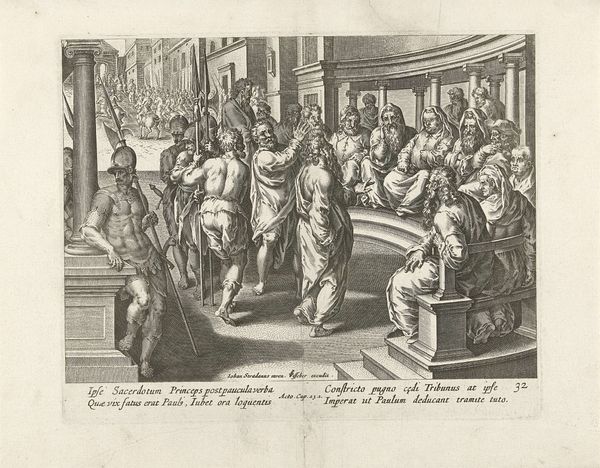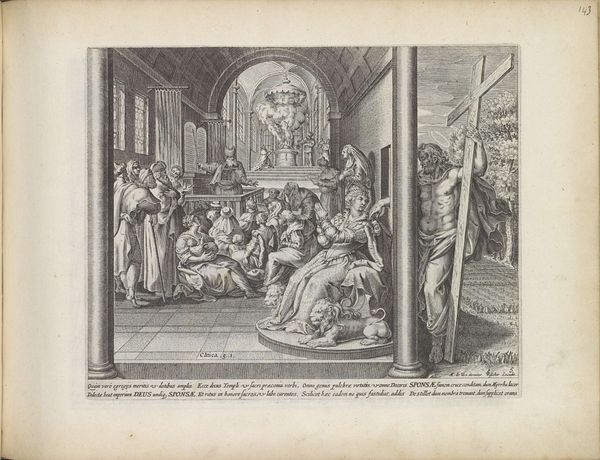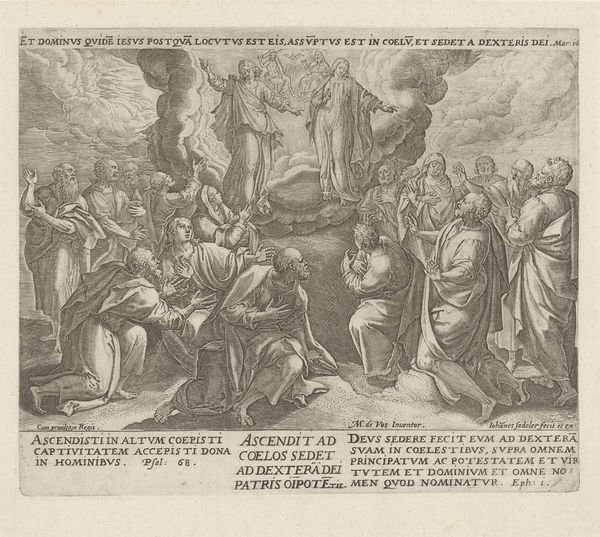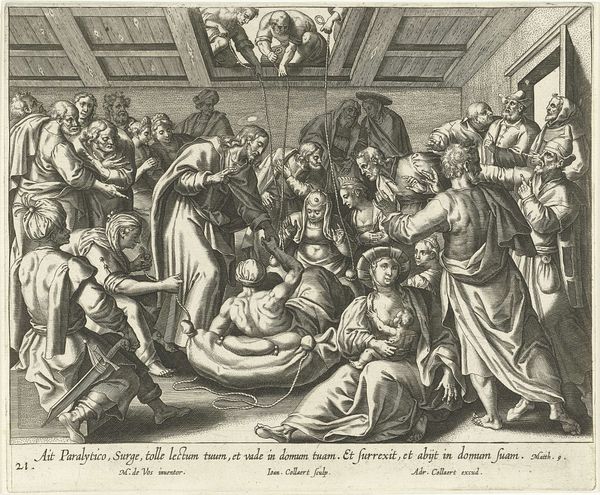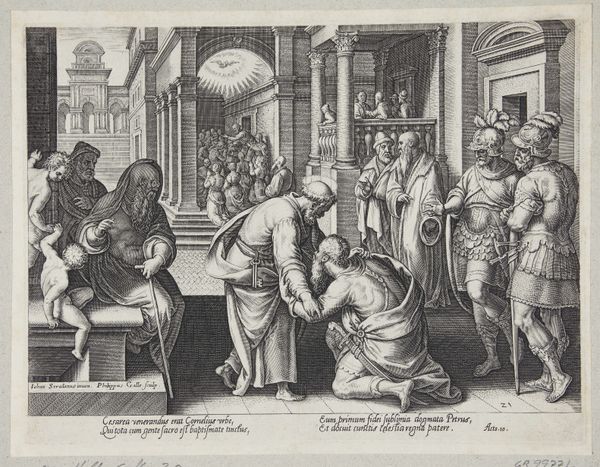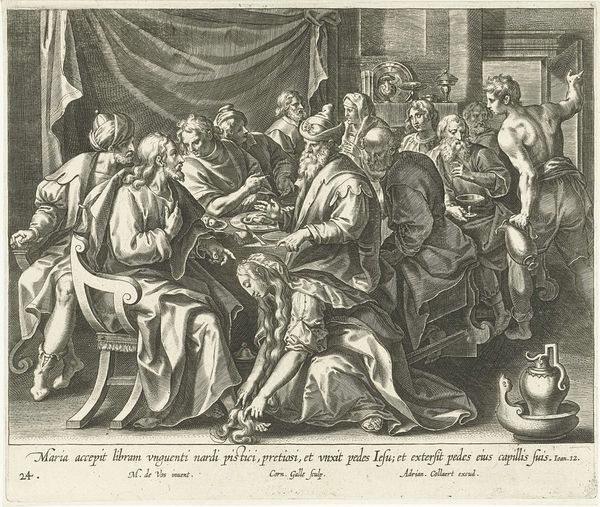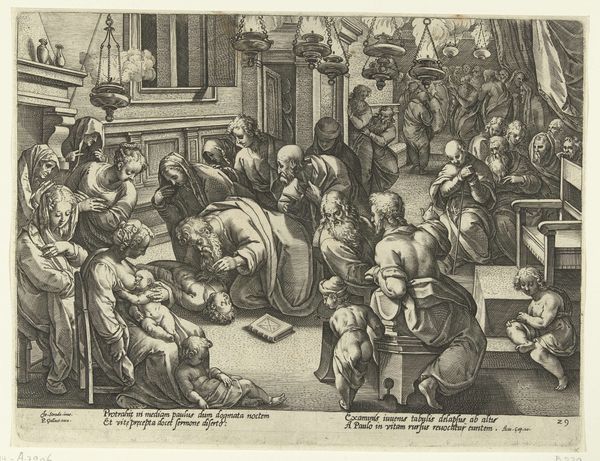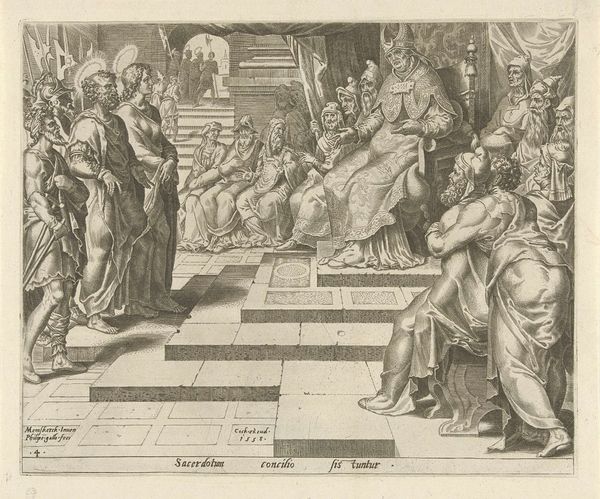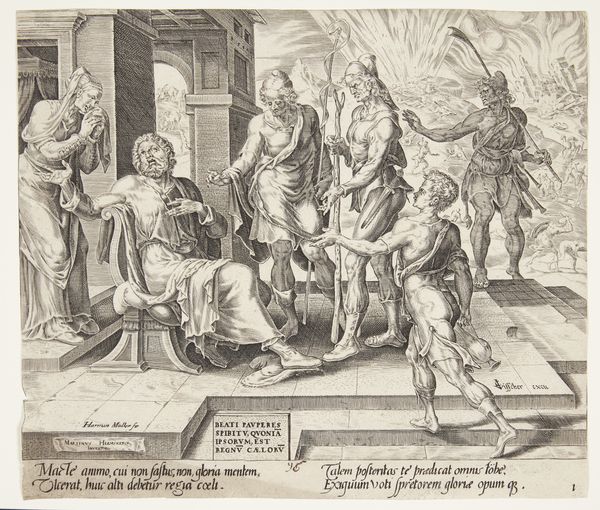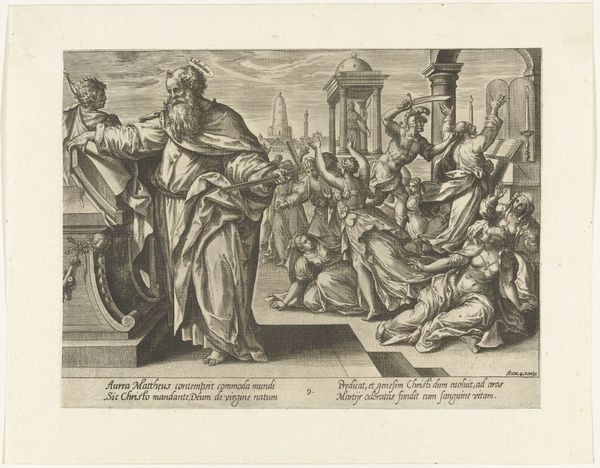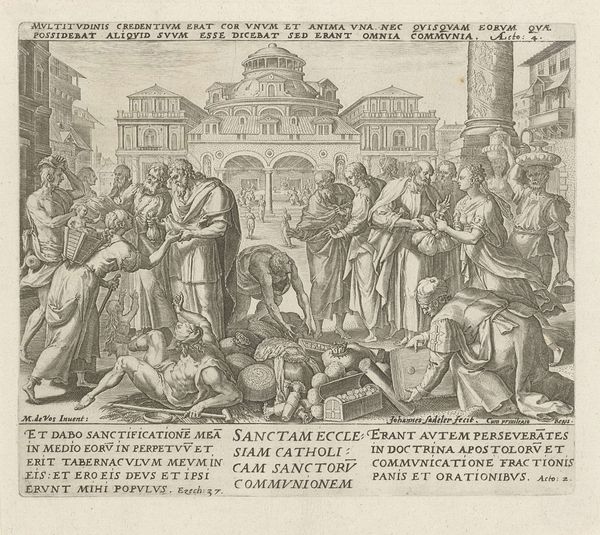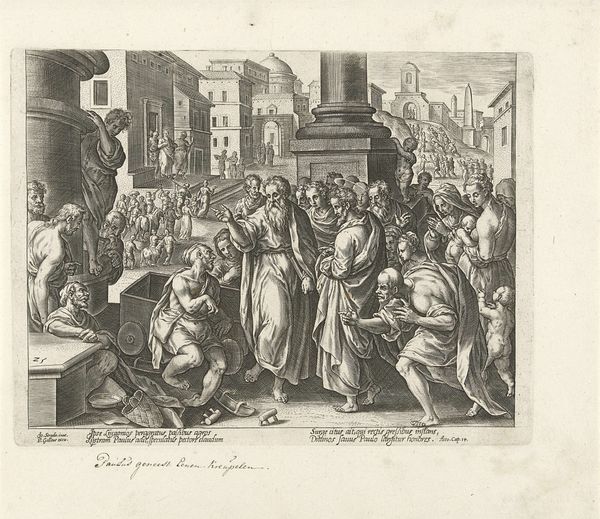
Dimensions: height 208 mm, width 243 mm
Copyright: Rijks Museum: Open Domain
Curator: The image before us is an engraving entitled 'Preek van de apostel Petrus: 'de vergeving van de zonden,'' or "Sermon of the Apostle Peter: 'The Forgiveness of Sins'" by Johann Sadeler I, created in 1579. It's currently housed in the Rijksmuseum. The composition immediately strikes me—the linear precision, the crispness of the engraving, the architectural backdrop adding depth and structure... It's all so meticulous. Editor: My first impression is the powerful narrative it conveys. Peter's commanding presence draws the eye, while the surrounding figures show a diversity of reactions, creating a very human, relatable scene. I immediately wonder, what narrative does this engraving insert itself into, and what stories might it obscure? Curator: Formally, the composition centers around Peter. Note how Sadeler uses line and shadow to give Peter’s figure depth and authority. The orthogonal lines of the architecture subtly direct our gaze towards him, underscoring his central role in the narrative. What does the rendering technique employed here convey about religious themes in the baroque era? Editor: Well, given its historical context, created amid religious and political upheaval, this piece resonates deeply. Sadeler was working during a time of immense religious conflict, so his depiction of Peter preaching forgiveness serves as a powerful assertion of the role forgiveness can have on human connection in chaotic eras. Look at the varied reactions of those listening—acceptance, skepticism, introspection—it suggests an active, not passive, engagement with the message, mirroring the debates within Christianity itself. Curator: Yes, but by using clear, distinct lines and meticulously rendered figures, Sadeler isn’t just presenting a scene but also structuring an argument—one about clarity, order, and divine authority. The balance in the artwork serves to affirm this divine authority that both demands adherence but invites it in equal measure. The message lies in its formal structure and meticulousness. Editor: I understand. I find myself gravitating toward the figures themselves – the marginalized, the dispossessed seeking solace in Peter's words. How might the inclusion of this diversity represent or reimagine societal relationships of the era, giving voice to different genders, age groups, and social classes within an established, authoritative Church? Curator: It’s fascinating to consider how formal qualities and social context inform our understanding. I leave feeling that an artwork, like any successful persuasive document, cannot present such profound subject matter with just technique; indeed, it invites all elements to present an active and convincing argument to its audiences. Editor: For me, it brings a new layer to understanding the narratives shaping religious reformation, urging all contemporary viewers to reconsider assumptions we bring to such an artwork—ultimately prompting dialogue with each other and our shared history.
Comments
No comments
Be the first to comment and join the conversation on the ultimate creative platform.
